 Game Theory, Psychology
Game Theory, Psychology  2 Comments
2 Comments Gamerography, Vol. 3: Wired to Play Differently
There’s finally a decent volume of literature out there about how women experience games–especially RPGs and video games–different than men. It helps all of us who’ve struggled to put words to the perspectives that we bring to the gaming table, many of which result in very different interactions with the rules, the stories, and the other gamers. And it provides writers and designers with insights that have changed the way games are written, so they allow more kinds of gamers to contribute to the collective interaction.
So I’d like to attempt to do something similar with another piece of myself that I bring to the gaming table. I have Asperger’s Syndrome, a difference in brain-wiring that places me on the autism spectrum. This part of myself is a relatively new discovery, but it’s undeniable and incredibly enlightening about things I could never otherwise explain. Many of these features affect how I experience creativity, social interaction, and collaborative work, three central pieces of the act of tabletop gaming.
The most important factor for me is my visual memory. I’ve written about my odd filing system before, but until the HBO movie about the life of Temple Grandin, I’d never seen my memory process outside my head. Because I have that visual catalog in my mind, I get incredibly vivid pictures from a multiplicity of contexts whenever someone invokes a place, a person, a costume, and a piece of equipment.
Practically speaking, this manifests for me in gaming in a number of ways. I have virtual battlemats in my head, and I can examine them from any vantage point, without needing minis or land/cityscapes (though I do enjoy the physical objects very much, too, for different reasons). I have pictures of characters and settings in my head that I literally inhabit. I know the size of my character’s bodies, how various features affect the way they move and sound. I assign them sensory features as well as hair and eye color, so I know how they smell and the close-up feel of their skin and clothing. They’re live, vivid people in real, textured places.
Another factor is my tendency to seek out patterns. It’s not compulsive, like someone with OCD might be; it is, though, automatic. For many autistic gamers, this allows them to understand RPG systems and make them do fantastic tricks, like a lion tamer making a beast jump through hoops. They see game systems as just another coding language that can be manipulated to perform the desired action.
Sadly, this is not me. I cannot grok systems unless the rules are so basically logical and self-evident, with a minimum of math, that they’re labeled “Ages 7 and up.” (No, I can’t explain this at all. I can at least read 10 different languages, so systems aren’t the problem, but math and I have a beef going back to 7th Grade.) As a consequence, character generation is agony unless it’s basically a single-step process, and I almost never play magic users. I vastly prefer cinematic, story-driven systems in which dice are only employed to give an edge of chance to the action I propose.
My pattern recognition talent gives me a different edge. First, I’m hell on carefully planned mysteries and adventures. One friend calls me the “storybreaker”–you can practically see the tire tracks where I went offroad, revealing options that never occurred to the author, in the ones that were eventually published. I don’t mean to circumvent plot devices; it’s a function of my autistic tendency to rapidly play through consequences to the Nth degree, thus eliminating options which I know will end in failure and generating other possibilities from that birds-eye view.
Second, I love pregens, even in systems that are entirely new to me. The words and numbers assemble themselves into 3D constructions in my mind. The closest I can come to a visual representation of this experience comes with the virtual reality models Tony Stark uses in the Iron Man movies to analyze maps, machinery plans, and crime scenes. (Here’s an example.) The alchemical process of “blowing up” a character sheet combines with my sensory memory to conceive a fully formed person almost instantaneously. I really wish you could see what this looks like–it’s pretty amazing from the inside.
The final factor I’ll mention in this post is my relationship with words. I’m hyperlexic (in short, far too many words for any and all things that pass through my head or mouth) and I’m a terrible show-off. Just as words form lifelike people and places in my mind, I love to craft my own contributions to the game with descriptions and dialogue, as vividly rendered as I can manage. Back in my days of MUSHing, the whole game was nothing but words on a screen, but I have scenes lodged in my memory that are so thoroughly illustrated and acted that I have difficulty remembering whether I saw them in a movie. And when I’m at the table, I can use the additional tools of vocal inflection, accents, gestures, and expressions, so my love of acting, connected to that vivid character in my head, can lead me to overplay my parts to a degree that might make other players uncomfortable. At least I don’t insist on staying in character while we take pizza breaks.
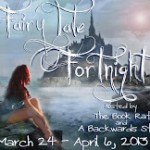

 tales to the straightforward ones.
tales to the straightforward ones. address that lack of feminine agency, I came up embarrassingly short of good lessons for boys. Current fairytale telling seems to operate on the idea that there’s a finite amount of power and smarts in the story, and if the women get more of it now, it has to happen at the expense of the men.
address that lack of feminine agency, I came up embarrassingly short of good lessons for boys. Current fairytale telling seems to operate on the idea that there’s a finite amount of power and smarts in the story, and if the women get more of it now, it has to happen at the expense of the men. Princess Fiona, Merida, and Rapunzel are smart, feisty, and entirely capable of their own liberation and defense in times of peril. Heroes, on the other hand, like Shrek, Merida’s father Fergus, and Flynn, the hero-rogue in Tangled, are to varying degrees incompetent, gullible, morally weak, and easily distracted from their goals, dependent on the women in their lives to keep them in line and out of trouble. The only male characters that go through real, multi-layered, character evolution in recent years are Beast from Disney’s Beauty and the Beast and Hiccup in How To Train Your Dragon. Jack in the recent Jack the Giant-Killer is a fairly humble live-action hero whose love for the princess, at the very least, does not make him stupid. Shrek does go through some evolution, but seems to stumble his way from lesson to lesson, and seems weakened and henpecked by the end of the series.
Princess Fiona, Merida, and Rapunzel are smart, feisty, and entirely capable of their own liberation and defense in times of peril. Heroes, on the other hand, like Shrek, Merida’s father Fergus, and Flynn, the hero-rogue in Tangled, are to varying degrees incompetent, gullible, morally weak, and easily distracted from their goals, dependent on the women in their lives to keep them in line and out of trouble. The only male characters that go through real, multi-layered, character evolution in recent years are Beast from Disney’s Beauty and the Beast and Hiccup in How To Train Your Dragon. Jack in the recent Jack the Giant-Killer is a fairly humble live-action hero whose love for the princess, at the very least, does not make him stupid. Shrek does go through some evolution, but seems to stumble his way from lesson to lesson, and seems weakened and henpecked by the end of the series. My boys love that these stories are full of adventure and derring-do, and they honestly don’t care too much who’s doing the swashing and the buckling. They’re just as in love with Merida as they were with Shrek. I’m proud of the fact that they don’t see much difference among heroes of different genders. They buck the convention that “you can get a girl to see a boys’ movie, but you can never, not ever, get a boy to watch a girls’ movie.”
My boys love that these stories are full of adventure and derring-do, and they honestly don’t care too much who’s doing the swashing and the buckling. They’re just as in love with Merida as they were with Shrek. I’m proud of the fact that they don’t see much difference among heroes of different genders. They buck the convention that “you can get a girl to see a boys’ movie, but you can never, not ever, get a boy to watch a girls’ movie.” But I wish there were room between the domineering, Johnny-Come-Latelys of Charles Perrault and
But I wish there were room between the domineering, Johnny-Come-Latelys of Charles Perrault and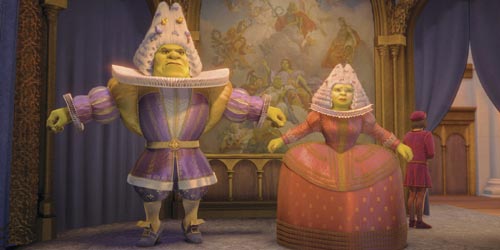 classic Disney, and the updated, apologist buffoons that Hollywood is serving up to boys like mine. They don’t want their fairytales to undergo a gory reversal toward the truly grim versions of Grimm’s. My ten-year-old understood that once parents felt the need to educate their kids that the outside world was a scary, unpredictable place, but when asked if boys still need brutal fairytales to teach that lesson, he replied with a snort, “Are you kidding? All you have to do to learn that is watch the news, for gods’ sakes.”
classic Disney, and the updated, apologist buffoons that Hollywood is serving up to boys like mine. They don’t want their fairytales to undergo a gory reversal toward the truly grim versions of Grimm’s. My ten-year-old understood that once parents felt the need to educate their kids that the outside world was a scary, unpredictable place, but when asked if boys still need brutal fairytales to teach that lesson, he replied with a snort, “Are you kidding? All you have to do to learn that is watch the news, for gods’ sakes.”





 The
The 
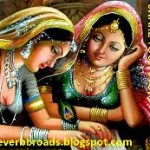
 A big part of me is Hermione Granger. I’m a bossy know-it-all witch, always eager to share what I’ve learned with other people. That’s why I’m happiest when I’m teaching–all that reading and study is zero fun if I’m not sharing it with someone else. I’d rather spend my vacation in the restricted section of the library, and I’m a bit befuddled by how little attention most people seem to be paying to, well, everything. I’m pretty sure there’s no problem in the world that can’t be solved with more reading. I’m also fiercely loyal to those I love, and willing to go to the mat (or the troll, or the Shrieking Shack, or the Ministry of Magic) for them.
A big part of me is Hermione Granger. I’m a bossy know-it-all witch, always eager to share what I’ve learned with other people. That’s why I’m happiest when I’m teaching–all that reading and study is zero fun if I’m not sharing it with someone else. I’d rather spend my vacation in the restricted section of the library, and I’m a bit befuddled by how little attention most people seem to be paying to, well, everything. I’m pretty sure there’s no problem in the world that can’t be solved with more reading. I’m also fiercely loyal to those I love, and willing to go to the mat (or the troll, or the Shrieking Shack, or the Ministry of Magic) for them. But Hermione doesn’t cover my weird, unpredictable, impulsive side. For that, I turn to Delirium. She’s one of the Endless, a group of mythic archetypes that function as quasi-divinities/forces of nature in the classic graphic novel series The Sandman. Delirium hasn’t been quite right in the head since her brother Destruction, the big bluff protector of the bunch, split town. She wanders between her own reality and everyone else’s, and is fond of bizarre pronouncements and non sequiturs. At heart, though, she’s a little confused, a lot optimistic, and genuinely loves her family, imperfect though they are.
But Hermione doesn’t cover my weird, unpredictable, impulsive side. For that, I turn to Delirium. She’s one of the Endless, a group of mythic archetypes that function as quasi-divinities/forces of nature in the classic graphic novel series The Sandman. Delirium hasn’t been quite right in the head since her brother Destruction, the big bluff protector of the bunch, split town. She wanders between her own reality and everyone else’s, and is fond of bizarre pronouncements and non sequiturs. At heart, though, she’s a little confused, a lot optimistic, and genuinely loves her family, imperfect though they are.


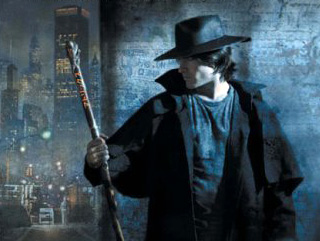




 Reviewers have widely panned the movie as a “
Reviewers have widely panned the movie as a “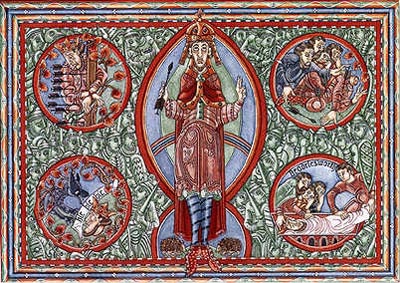


 The second male character I played was in a con game, but he’s lodged in my memory (and possibly those of other players) as firmly as any character in an extended campaign. My friends Lydia and Rob had raved about the fantastic sessions of
The second male character I played was in a con game, but he’s lodged in my memory (and possibly those of other players) as firmly as any character in an extended campaign. My friends Lydia and Rob had raved about the fantastic sessions of  And I’ve never played Goldmoon in a run-through of the Dragonlance adventures that didn’t make me wonder why Goldmoon and Riverwind didn’t take their toy and go home. In one particularly memorable campaign, Goldmoon met the rest of the companions as they punched Flint repeatedly, in an effort to render him senseless so they could cross the river. I’ve got lots of problems with the character, but frankly, I’ve never been able to get past that first, most essential obstacle.
And I’ve never played Goldmoon in a run-through of the Dragonlance adventures that didn’t make me wonder why Goldmoon and Riverwind didn’t take their toy and go home. In one particularly memorable campaign, Goldmoon met the rest of the companions as they punched Flint repeatedly, in an effort to render him senseless so they could cross the river. I’ve got lots of problems with the character, but frankly, I’ve never been able to get past that first, most essential obstacle.



